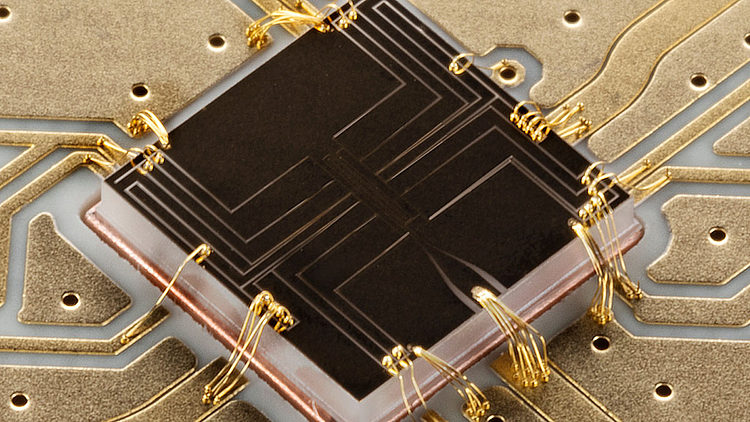Quantum Computing – Made in Lower Saxony

Leibniz University Hannover (LUH) and quantum alliance QVLS provide insights into their quantum computer research laboratories.
Within the next five years, Lower Saxony’s first quantum computer with 50 qubits is to be launched. Recently, members of the initiative Quantum Valley Lower Saxony (QVLS) presented their strategy for achieving this goal. “Leibniz University Hannover and its partners within the quantum alliance have outstanding expertise in the field of quantum technology. In the DFG Funding Atlas, LUH was awarded first place in the category ‘Optics, quantum optics and physics’. Together, we have ideal conditions for succeeding in our endeavour to build a quantum computer”, summarises Prof. Dr. Volker Epping, President of LUH.
The alliance pursues one of the most promising approaches: quantum computing with trapped ions. This technology utilises ions – charged atoms – as the computer’s basic unit of information. One ion stands for one qubit (just like bits as basic units of information in conventional computers). These ions are trapped via electric fields. Usually, focussed laser beams are used for steering the ions. However, controlling these lasers is quite difficult and requires significant effort.
The QVLS researchers therefore intend to follow a different approach by carrying out operations on qubits via microwave fields. “Today, microwave components can be found everywhere, such as in mobile phones. Microwaves are very easy to control. Furthermore, we can incorporate the required control mechanisms into the ion traps”, explains Professor Christian Ospelkaus, LUH spokesperson of the quantum alliance. Compared to highly specialised lasers, using microwave technology in quantum computers could reduce error rates. Professor Ospelkaus: “The whole procedure requires little effort, is very precise and also extremely robust”.
With this approach, the researchers recently succeeded in realising the required quantum operations on two qubits. “The challenge will be to scale this approach in order to achieve the required 50 qubits and – just like in conventional computers – enable different registers, such as for arithmetic operations and memory operations”, explains Professor Ospelkaus.
This will be achieved through effective teamwork between the individual research facilities of the quantum alliance and their respective fields of expertise. At Physikalisch-Technische Bundesanstalt (PTB), researchers produce the chips. Moreover, they test and characterise the components of the complex processor. Simultaneously, a team at Leibniz University Hannover develops a special cryogenic ion trap. The actual quantum computer will be built, put into operation, tested and programmed at HITec, a quantum technology research building of Leibniz University Hannover. TU Braunschweig contributes vital expertise in the field of scaling via microwave conductors integrated into chips, detectors and control electronics.
Professor Ospelkaus: “Our consortium comprises renowned experts for all technologies required to build a quantum processor with many qubits.”
Further information
For more information, please contact Professor Christian Ospelkaus, Institute of Quantum Optics, Tel. +49 511 762-17644, Email christian.ospelkaus@iqo.uni-hannover.de
